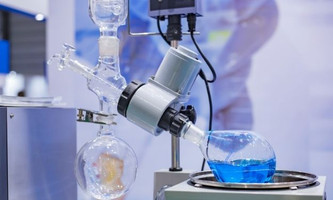Passive vs. Active Closed-Loop Extraction
Posted by USA Lab Equipment on Nov 20th 2020
Closed-loop extraction is the process of extracting a substance using a solvent in a closed-loop system so that the solvent never comes in contact with the outside air. There are two main types of closed-loop extraction systems: passive and active. But which closed-loop extraction system is best? Each of these options has various benefits and drawbacks to consider when you’re determining which is right for your application. To learn about the main differences between passive vs. active closed-loop extraction systems, continue reading.
Passive Closed-Loop Extraction
A passive closed-loop extraction system modulates pressure and recovers the solvent by manipulating the temperature in a closed system. This method of extraction operates under the principle that gas always seeks the lowest possible pressure in a system. Because the pressure of a hydrocarbon gas directly correlates to temperature, strategically altering the temperature to heat the gas in the collection tank and cool the solvent recovery tank naturally transfers the gas from one part of the closed-loop extraction system to another. When the temperature in the recovery tank is below the boiling point of the vaporized solvent, the solvent will recondense into a liquid so that it can be recovered and reused.
This method is simpler than active closed-loop extraction and requires less maintenance, but it does have a few downsides—namely, more solvent is typically lost throughout the process, which is also generally slower and less efficient.
Active Closed-Loop Extraction
In general, active closed-loop extraction system follows the same principles as its passive counterpart. Unlike passive closed-loop extraction, however, active closed-loop extraction doesn’t rely on a natural solvent recovery method. Instead, it incorporates recovery pumps to speed up the process. The recovery pumps accelerate the solvent recovery process by using a push-and-pull action to facilitate more rapid movement of the solvent vapors throughout the system. In addition to speeding up solvent recovery, the use of vacuum pumps in active closed-loop extraction also reduces the amount of solvent lost throughout the process.
Once the vaporized solvent is transported into the recovery tank, a coil located on the output port of the pump recondenses it into a liquid. Thus, active closed-loop extraction generally has smaller continuing costs because it reduces the need for high-cost chilling options such as dry ice, which is commonly used in passive closed-loop extraction.
Active closed-loop extraction is generally faster and less expensive, and it recovers more solvent, but it’s more complicated, which makes it challenging for beginners to use. In addition, it requires more maintenance, as the pumps need to be sustained and rebuilt periodically. Plus, the initial investment of an active closed-loop system is typically larger than a passive closed-loop extraction system.

